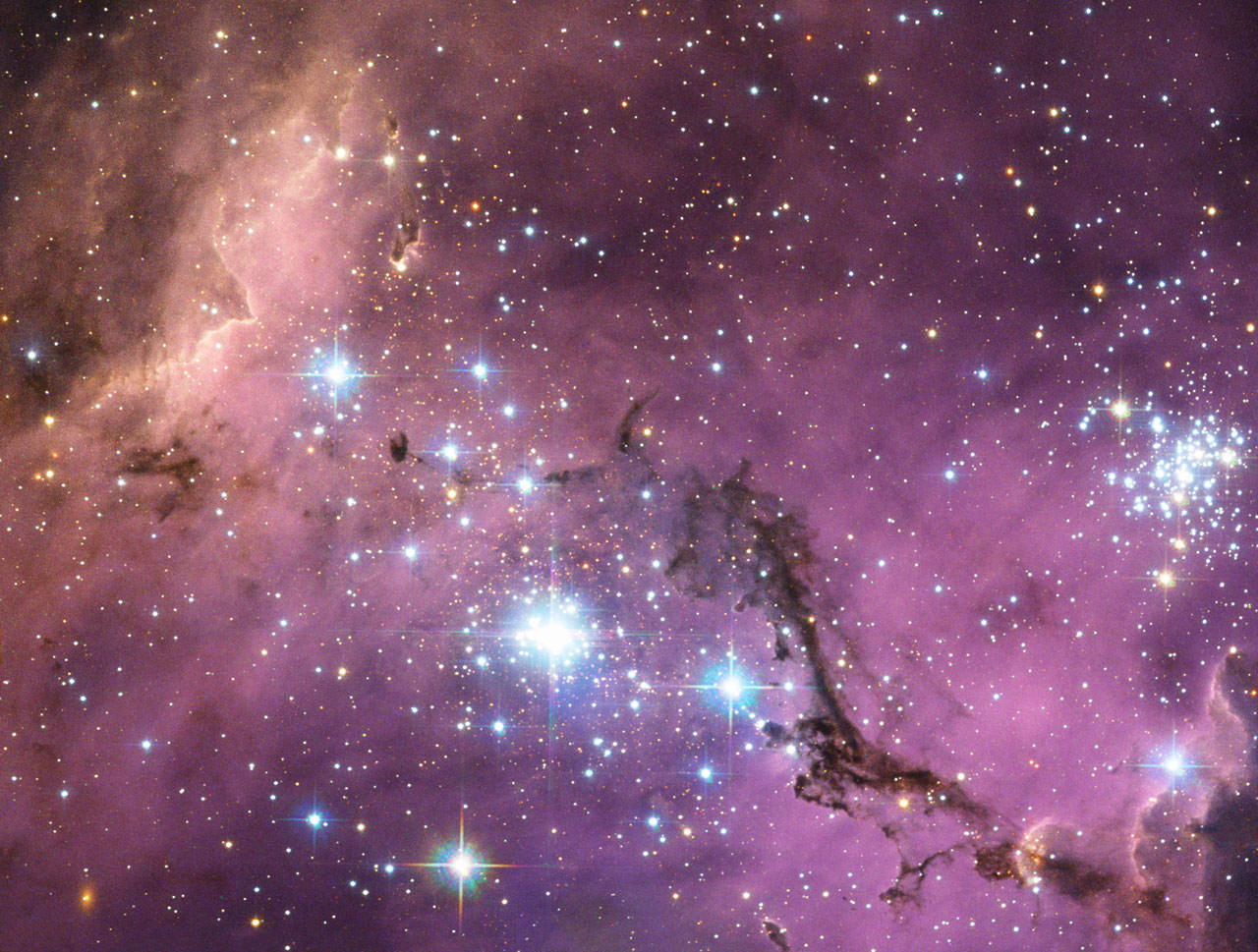Hubble view of star formation region N11 from the NASA/ESA Hubble Space Telescope. Image credit: NASA/ESA Hubble. Zoom by John Williams/TerraZoom using Zoomify.
New computer wallpaper alert. Light from the Large Magellanic Cloud takes nearly 200,000 years to travel to Earth. And it’s worth the wait.
Behold LHA 120-N 11, or just simply N11, in this image from the NASA/ESA Hubble Space Telescope.
This region of the Large Magellanic cloud is ablaze with star formation. It is the brightest and most prolific stellar nursery known to scientists. Explore the regions of colorful gas and dark fingers of fine dust. Hydrogen gas glows its characteristic pinkish-red throughout the image providing plenty of fuel for new stars. Massive stars, born from the cloud itself, blast the surrounding nebula with stellar winds and ultraviolet radiation that ionizes the hydrogen gas causing it to glow. Bright pockets of star formation, NGC 1769, in the center, and NGC 1763, to the right in the image, dominate this scene. Explore a broader view of N11.
Alot of Hubble’s time is spent peering at the star clouds of the Large Magellanic Cloud. The LMC, an irregular dwarf galaxy, is close astronomically speaking. This proximity – less than one-tenth the distance to the Andromeda Galaxy (M31), the closest large spiral galaxy – allows astronomers to study star formation as well as galaxy evolution in detail. It is also relatively clear of the Milky Way’s busy and dusty plane offering a clear view uncluttered by bright foreground stars. LMC shares some features with spiral galaxies, such as a single arm and a clearly visible central bar. Some research indicates that the small galaxy is just passing by, distorted by the gravitational tug of the much larger Milky Way Galaxy.
The data from this image were uncovered by Josh Lake, an astronomy teacher at Pomfret School in Connecticut. The image won first prize in the ESA’s Hubble Hidden Treasures image processing competition. Members of the public were invited to scour Hubble’s image archive for data that could be turned into stunning imagery.
Source: ESA Hubble
Links:

